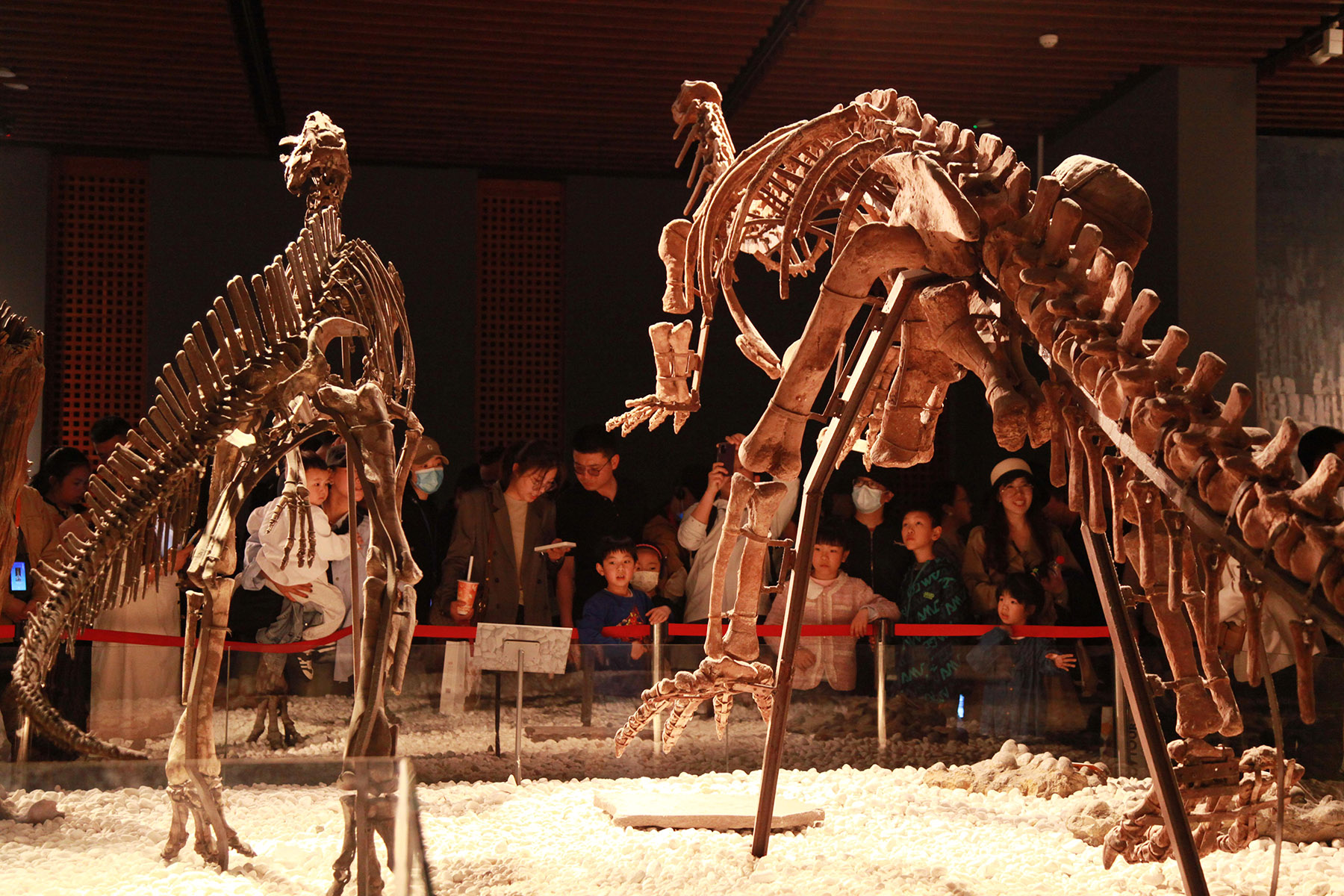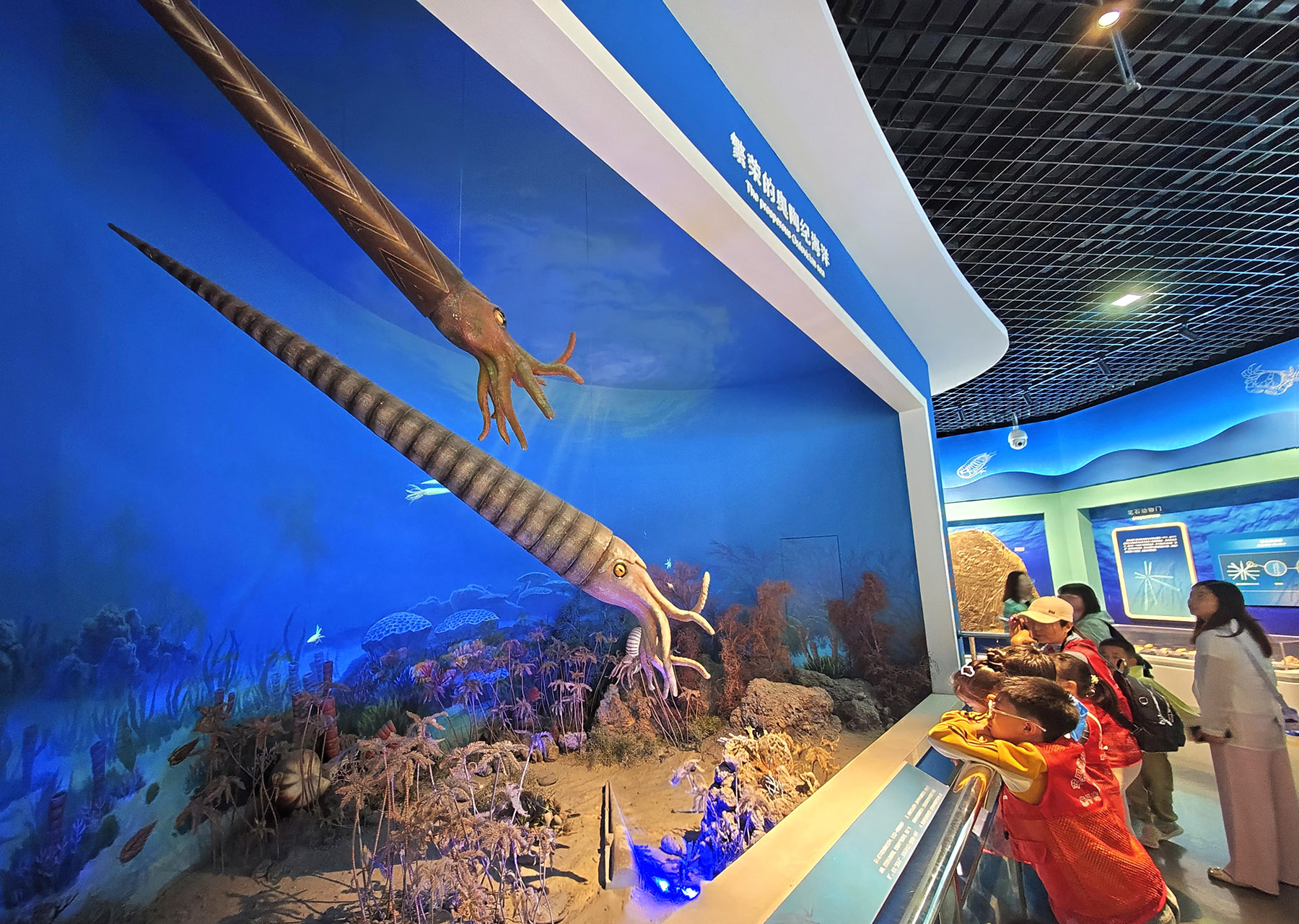Since beginning of year, ticket bookings for such venues up 104%

The growing popularity of embarking on cultural trips has been witnessed in China, and museums and other cultural venues have become popular spots for domestic and foreign tourists alike traveling around the country.
During the May Day holiday that lasted from May 1 to May 5, more than 6,000 museums across the country received a total of 50.54 million person-time visitors, according to the National Cultural Heritage Administration.
READ MORE: Event launched to help create 'City of Museums'
With International Museum Day celebrated on May 18, museums across the country have launched a series of diverse themed exhibitions and social educational activities in May, leading to higher popularity of the cultural and museum tourism market in China.
These museums meet tourist demand in a specific field or theme through exhibitions, unique cultural charm or regional characteristics ...
Cai Miao, product manager of East China at Tuniu Corp
Since the beginning of the year, the booking volume of museum tickets from domestic tourists has increased by 104 percent over last year. Among every 10 people who booked admission tickets for scenic spots, one was booked for museum tickets, said Trip.com Group, China's largest online travel agency.
"Behind the popularity of cultural and museum tours is the in-depth integration of traditional culture and latest ways of travel. Museums, as important places for inheriting and showcasing culture, have attracted more attention and participation of tourists by hosting various exhibitions and activities," said Cai Miao, product manager of East China at Tuniu Corp, a Nanjing, Jiangsu province-based online travel agency.
In addition, museums across the country have been actively exploring innovative and diverse display measures that meet tourist demand. These include digital and intelligent displays, interactive experiences, short videos and livestreaming sessions, and the development of more cultural and creative products, Cai said.
Young tourists and families with children have become the main consumer groups of cultural and museum tours. This year, travelers aged 45 and below account for 86 percent of the bookings for cultural and museum-related travel products, Tuniu said.
In terms of tourist sources, those from Beijing; Shanghai; Nanjing; Guangzhou and Shenzhen of Guangdong province; Chongqing; Chengdu, Sichuan province; and Xiamen, Fujian province, have shown a strong demand for taking cultural and museum tours, Tuniu found.
"More young tourists and families are experiencing the charm of traditional culture and the fun of museum tours by checking in on some renowned cultural relics, collecting cultural and creative products, and visiting museums online," Cai said.
"The growing trend of hanfu (traditional Chinese clothing of the Han ethnic group) culture and the development of innovative cultural and creative products have also created new consumption hot spots and growth points for the cultural and museum tourism market," she said.

Cultural and historical museums, as well as science and technology museums, have been among the top choices for parent-child travel. Since March, the online search volume for natural science popularization, outdoor exploration and research tour products has doubled compared with February, according to Qunar, a Beijing-based online travel agency.
So far, the total number of national first-class museums has reached 327, following the recent rating of the latest batch of museums that were rated as first-class museums by the China Museum Association.
"National first-class museum "stands as the highest-level classification of museums in China, representing the advantages of the museum in quantity, type and preservation of precious cultural relic collections. As important cultural and tourism resources, such museums have attracted a large number of tourists, the association said.
This year, the Palace Museum, National Museum of China in Beijing, Nanjing Museum, Shaanxi History Museum, Hunan Museum and other national first-class museums have been particularly popular with high volumes of bookings, Tuniu said.
During holidays and weekends, it is difficult to get an admission ticket. Group tour options that include itineraries visiting museums are well received by travelers.
In addition, with more flights available to smaller cities and county-level towns becoming new growth points in the domestic tourism market, more tourists are shifting their attention to some niche and thematic museums.
Such museums include the Shanghai Auto Museum, Zigong Dinosaur Museum, Nanjing City Wall Museum, Qingdao Beer Museum and Nanjing Imperial Examination Museum of China.
"These museums meet tourist demand in a specific field or theme through exhibitions, unique cultural charm or regional characteristics, and they have attracted an increasing number of tourists," Cai said.
Meanwhile, foreign visitors are enthusiastic about checking out museums in China. So far this year, booking volumes of museum admission tickets from foreign tourists have increased 10-fold compared with all of last year, Trip.com said.
Among foreign cultural and museum enthusiasts, orders from the post-90s, post-80s and those travelers who were born after the year 2000 accounted for 34 percent, 25 percent and 21 percent of the total, respectively.
Tourists from Japan, South Korea, Australia, the United States and Thailand have been most interested in visiting museums in China, according to Trip.com, and the platform can support guests from 140 countries to book museum tickets in China in 35 languages.
Trip.com said it has strengthened cooperation with more domestic museums to provide convenience for foreign tourists.
In April, the company and Emperor Qinshihuang's Mausoleum Site Museum — which houses the Terracotta Warriors in Xi'an, Shaanxi province — officially launched a platform for integrated services for foreign visitors. The two sides provide online ticketing channels in 24 languages and 29 currencies for consumers in 39 countries and regions.
ALSO READ: President Xi puts museums in spotlight
Since the launch of the service, more than 3,000 overseas consumers have booked trips related to viewing the Terracotta Warriors. Trip.com has also promoted the artifacts overseas such as in South Korea, Japan, Singapore and Thailand.
Next, the Terracotta Warriors scenic area plans to establish an overseas tourist data center with Trip.com to improve reservation services and provide overseas tourists with a better browsing experience.
In addition, some museums have launched night tours. At the Historical Museum of Taiping Heavenly Kingdom, a branch of the Nanjing Museum Administration, visitors can watch performances at night, according to Qunar.
At the Nanjing Folk Museum, visitors can enjoy waterworks shows and folk music performances in the evening. In addition, some museums have launched diverse cultural and creative products, such as ice cream and cultural and creative notebooks and bags, Qunar said.


